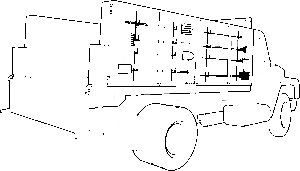Brake Replacements
Brake Replacements: Revolutionizing Mobility and Safety
Introduction
In the ever-evolving realm of transportation, brake replacements stand as a cornerstone of automotive safety and efficiency. This comprehensive article delves into the intricate world of brake systems, their global impact, economic implications, technological innovations, regulatory frameworks, and the challenges they face. As vehicles become increasingly sophisticated, understanding brake replacements is not merely about maintaining safety standards but also about driving sustainable and intelligent mobility solutions.
Understanding Brake Replacements
Definition: Brake replacements refer to the process of installing new brake components on a vehicle to restore its braking system’s performance and effectiveness. This involves replacing worn-out or damaged parts, ensuring optimal stopping power and extended brake life.
Core Components: The primary elements in a brake replacement involve:
-
Brake Pads/Shoes: These are the friction materials that contact the rotor or drum to slow down or stop the vehicle’s wheels. Different types of pads offer varied performance characteristics, catering to various driving conditions and preferences.
-
Rotors/Drum Brakes: Rotors are disc-shaped components attached to a vehicle’s wheels, while drums (in drum brakes) house the brake shoes. They experience significant wear over time, affecting braking efficiency.
-
Brake Calipers: Calipers are mechanical devices that squeeze the brake pads against the rotors, generating friction for slowing or stopping the vehicle. Modern calipers can employ various technologies for enhanced performance and durability.
-
Brake Fluid: A vital component, brake fluid transfers force from the driver’s pedal to the brakes, enabling their operation. It must maintain optimal levels and purity to ensure effective braking.
Historical Context: The development of efficient brake systems has been a pivotal aspect of automotive evolution. Early vehicles relied on mechanical linkages and foot-operated brakes, which were less effective and prone to failure. The introduction of hydraulic brakes in the early 20th century marked a significant milestone, allowing for greater control and safety. Over time, advancements such as power braking, anti-lock braking systems (ABS), and electronic stability control (ESC) have further revolutionized brake technology, enhancing vehicle dynamics and passenger safety.
Global Impact and Trends
Brake replacements are not limited to any specific region; they are a universal necessity across the globe. However, their implementation varies based on factors like:
-
Economic Development: Higher-income countries tend to have more sophisticated brake systems and stricter regulatory standards, leading to increased brake replacement rates. For instance, North America and Western Europe have advanced automotive industries with frequent brake upgrades.
-
Vehicle Age and Ownership: As vehicle parc ages, the demand for brake replacements rises. Developed nations often see higher replacement rates due to longer vehicle lifespans and more frequent maintenance practices.
-
Regional Driving Conditions: Different climates and terrains impact brake wear. Areas with heavy rain or snow may require more frequent brake servicing, while off-road enthusiasts face unique challenges that necessitate specialized brakes.
Global Trends:
| Region | Trend | Explanation |
|---|---|---|
| Asia-Pacific | Rapidly Growing Market | With the region’s booming automotive industry, especially in China and India, the demand for brake replacements is skyrocketing. |
| North America | Advanced Technology Adoption | Leading manufacturers are introducing innovative brake systems, such as active braking and advanced sensor technologies. |
| Europe | Stricter Emissions and Safety Standards | The European Union’s stringent regulations push automotive companies to incorporate robust brake systems, driving replacement demand. |
Economic Considerations
The economic landscape surrounding brake replacements is multifaceted:
-
Market Dynamics: The global brake replacement market is competitive, with various players offering different products. Original Equipment Manufacturers (OEMs) produce original brake parts, while Aftermarket suppliers offer compatible or performance-enhanced options at varying price points.
-
Investment Patterns: Automotive companies invest heavily in research and development to create more efficient and safer brakes, driving technological advancements. This fosters innovation but also increases initial costs for consumers.
-
Economic Impact: Brake replacements contribute significantly to the global automotive economy:
- Job Creation: Mechanics and specialized technicians are in high demand, creating employment opportunities.
- Parts Supply Chain: The market supports a vast network of suppliers and distributors, fostering local and international trade.
- Vehicle Maintenance Revenue: Regular brake servicing generates revenue for garages and workshops, contributing to the overall automotive services industry.
Technological Advancements
The technological front in brake replacements is dynamic, pushing the boundaries of vehicle safety and performance:
-
Advanced Materials: Engineers are exploring novel materials like carbon ceramics and composite brakes, offering improved heat dissipation and reduced wear, ideal for high-performance vehicles.
-
Smart Braking Systems: Integration of sensors and electronic control units (ECUs) enables active braking systems that can predict and mitigate collision risks, enhancing overall vehicle safety.
-
Autonomous Vehicles: While still in development, autonomous cars may reduce the need for traditional brake replacements as they employ advanced braking technologies to maintain safe distances.
-
Predictive Maintenance: The Internet of Things (IoT) allows sensors to monitor brake wear and provide real-time data, enabling predictive maintenance schedules and optimizing brake replacement timing.
Policy and Regulation
Regulatory bodies worldwide play a crucial role in ensuring brake safety:
-
Safety Standards: Organizations like the United Nations Economic Commission for Europe (UNECE) set global standards for vehicle safety, including braking systems. These standards dictate minimum performance criteria for brakes, ensuring consistent safety across borders.
-
Emissions Controls: Regulations often link brake performance to emissions reduction, as efficient braking can lower fuel consumption and emissions output. For instance, the EU’s stringent emissions laws drive the adoption of advanced braking technologies.
-
Warranty and Consumer Protection: Many countries have consumer protection laws that mandate warranty coverage for brake replacements, ensuring consumers are not left with costly repairs.
Challenges and Criticisms
Despite their significance, brake replacements face several challenges:
-
Cost and Accessibility: Brake replacement costs can be a barrier, especially in developing regions or for low-income earners. Limited access to quality parts and skilled mechanics further complicates the issue.
-
Environmental Concerns: The production and disposal of brake components have environmental implications, from raw material extraction to waste management. Recycling efforts are needed to mitigate these impacts.
-
Safety Variability: While brakes are critical, their effectiveness depends on proper installation and maintenance. Poor workmanship or skipping maintenance can lead to accidents, highlighting the need for standardized training and inspections.
Proposed Solutions:
- Subsidies and Incentives: Governments can offer financial support for brake replacements, especially in underdeveloped areas, to improve road safety.
- Skill Development Programs: Investing in mechanic training ensures a skilled workforce capable of performing high-quality brake replacements.
- Standardized Maintenance Programs: Implementing mandatory vehicle inspection programs with a focus on brakes can ensure optimal performance and reduce accidents.
- Green Technology Initiatives: Encouraging the development and use of eco-friendly brake materials and fluids can minimize environmental impacts.
Case Studies
Case Study 1: Germany’s Advanced Brake Systems
Germany, renowned for its automotive prowess, has pioneered advanced brake technologies. Mercedes-Benz, a German automaker, introduced the world’s first electronic stability control (ESC) system in 1995, which revolutionized vehicle dynamics and safety. This technology uses sensors and ECUs to detect wheel slip during cornering and automatically applies brakes to individual wheels to maintain control. Since then, German vehicles have consistently led global safety ratings, thanks in part to their sophisticated brake systems.
Case Study 2: India’s Challenges and Innovations
India, with its vast vehicle parc and growing automotive industry, presents unique challenges for brake replacements. The country has witnessed a rise in two-wheeler and three-wheeler vehicles, which have higher brake wear rates. Local manufacturers and aftermarket suppliers have responded by developing cost-effective, yet durable, brake solutions. For instance, the introduction of ceramic brake pads suitable for India’s diverse driving conditions offers improved performance at lower costs, making high-quality brakes more accessible to a wider demographic.
Future Prospects
The future of brake replacements looks promising, driven by several emerging trends:
-
Electric Vehicles (EVs): The rise of EVs brings new considerations for braking systems due to their unique power delivery and reduced mechanical complexity. Regenerative braking technologies are gaining traction, allowing vehicles to convert kinetic energy back into electrical energy, improving efficiency.
-
Connected Cars: As the automotive industry embraces connectivity, brake systems can benefit from real-time data exchange. Connected cars can communicate with traffic infrastructure and other vehicles, enabling proactive braking strategies for safer roads.
-
Artificial Intelligence (AI): AI algorithms can analyze driving patterns and predict maintenance needs, including brake replacements. This predictive approach optimizes vehicle performance and reduces unexpected failures.
Conclusion
Brake replacements are a critical aspect of modern mobility, ensuring the safety and efficiency of vehicles worldwide. From technological advancements to regulatory frameworks, this article has explored the multifaceted world of brake systems. As we look ahead, continued innovation, coupled with stringent regulations, will shape the future of braking technology. By addressing challenges and embracing new opportunities, the global automotive community can enhance road safety, improve vehicle performance, and contribute to a more sustainable transportation landscape.
FAQ Section
-
How often should I get my brakes checked?
It is recommended to have your brakes inspected at least once a year or every 20,000-30,000 kilometers (whichever comes first). Regular checks ensure optimal performance and prevent unexpected failures. -
Can I install new brake pads myself?
While some do-it-yourselfers may be capable of installing new brake pads, it is generally recommended to leave this task to trained professionals. Brake systems require precise alignment and calibration, and incorrect installation can lead to unsafe driving conditions. -
Are there any environmental benefits to using high-performance brakes?
Advanced brake systems designed for improved performance often incorporate materials that reduce brake dust and noise, enhancing overall vehicle dynamics. Additionally, efficient braking contributes to lower fuel consumption and reduced carbon emissions. -
How do I know if my brakes need replacing?
Signs of worn-out brakes include increased pedal travel (requiring more force to press), vibrations or pulsing felt in the pedal, unusual noises during braking, and longer stopping distances. If you notice any of these, consult a professional for an inspection. -
Are there any government incentives for brake replacements?
Some governments offer subsidies or tax benefits for vehicle maintenance, including brake replacements, as part of their road safety initiatives. Check with your local transport authority or automotive association to inquire about available programs.

Register Car California: Use VIN Verifier for Smooth Process
Registering a car in California is a straightforward process, but understanding the requirements and gathering the right documents are crucial.…

Register Your Car in California: Step-by-Step Guide with DMV VIN Verifier
Looking to register your car in California? This comprehensive guide walks you through every step, from understanding eligibility requirements to…

Register Car California: Gather Docs, Use VIN Verifier
Looking to register your car in California? This comprehensive guide walks you through every step, from understanding crucial requirements to…

Register Car California: VIN Verification & Necessary Steps
Registering a car in California is a straightforward process, but understanding the requirements and gathering the right documents is crucial.…

Register Car: Step-by-Step Guide for California DMV VIN Verification
Learn how to register your car in California with our step-by-step guide. First, understand the eligibility requirements for car registration…

Register Car California: Prepare, Visit DMV, Verify VIN
Registering a car in California is a straightforward process, but it requires careful preparation. To ensure a smooth experience, gather…

Register Car California: DMV Steps & VIN Verification
"Looking to register your car in California? This comprehensive guide walks you through the essential steps, from understanding key requirements…

Register Your Car: Step-by-Step California Guide with VIN Verifier
Looking to register your car in California? This comprehensive guide breaks down the process step-by-step, from understanding key requirements to…

Register Car California: DMV Steps with VIN Verifier
Registering a car in California involves understanding specific requirements and gathering essential documents. This comprehensive guide walks you through the…

Register Car California: Step-by-Step with VIN Verification
Looking to register your car in California? This comprehensive guide walks you through the entire process, ensuring a smooth experience.…